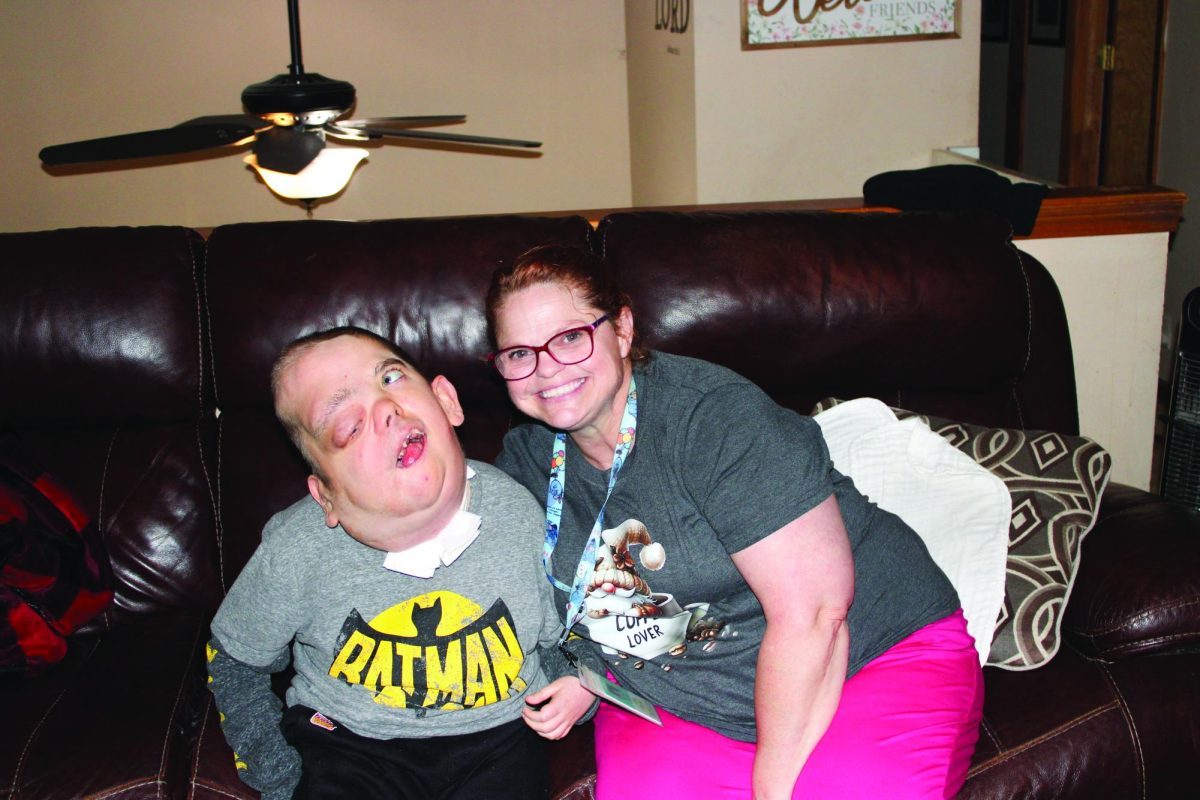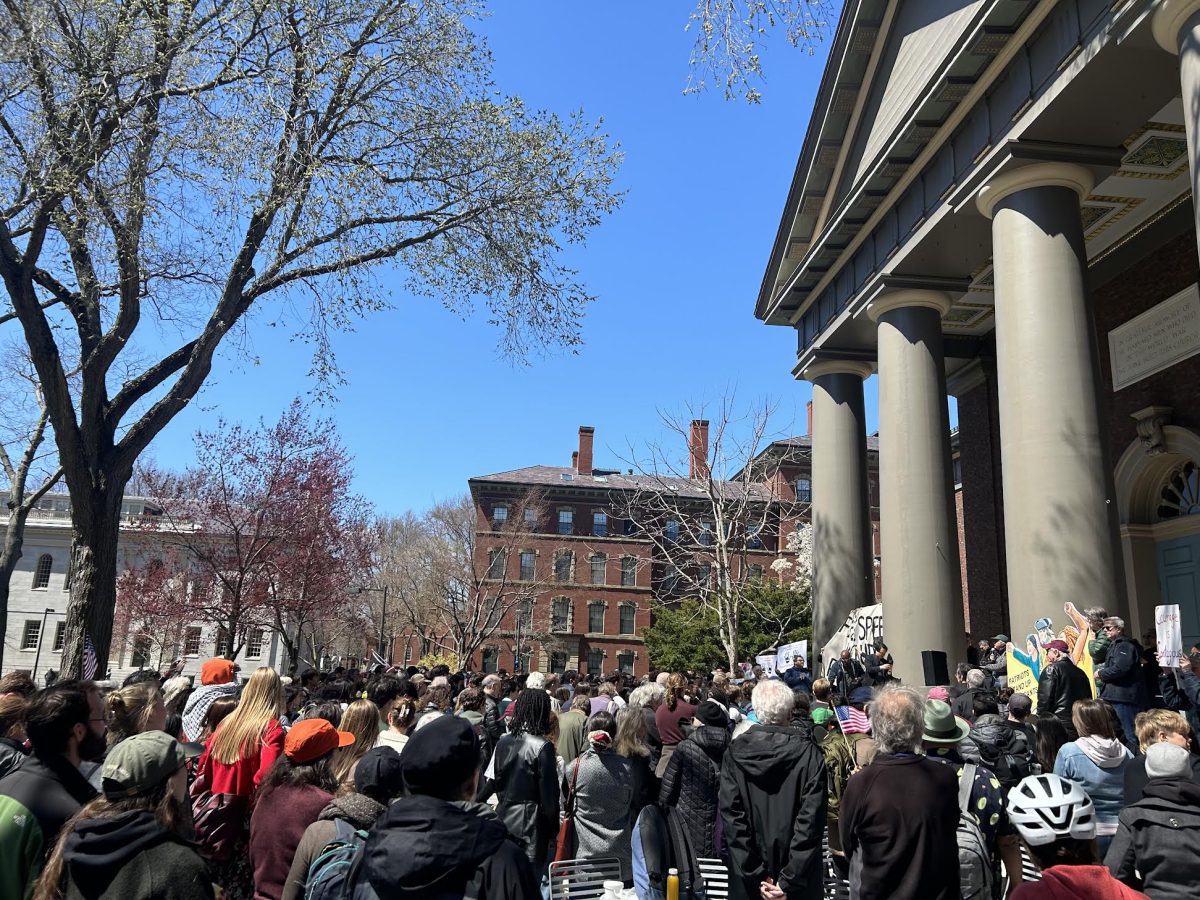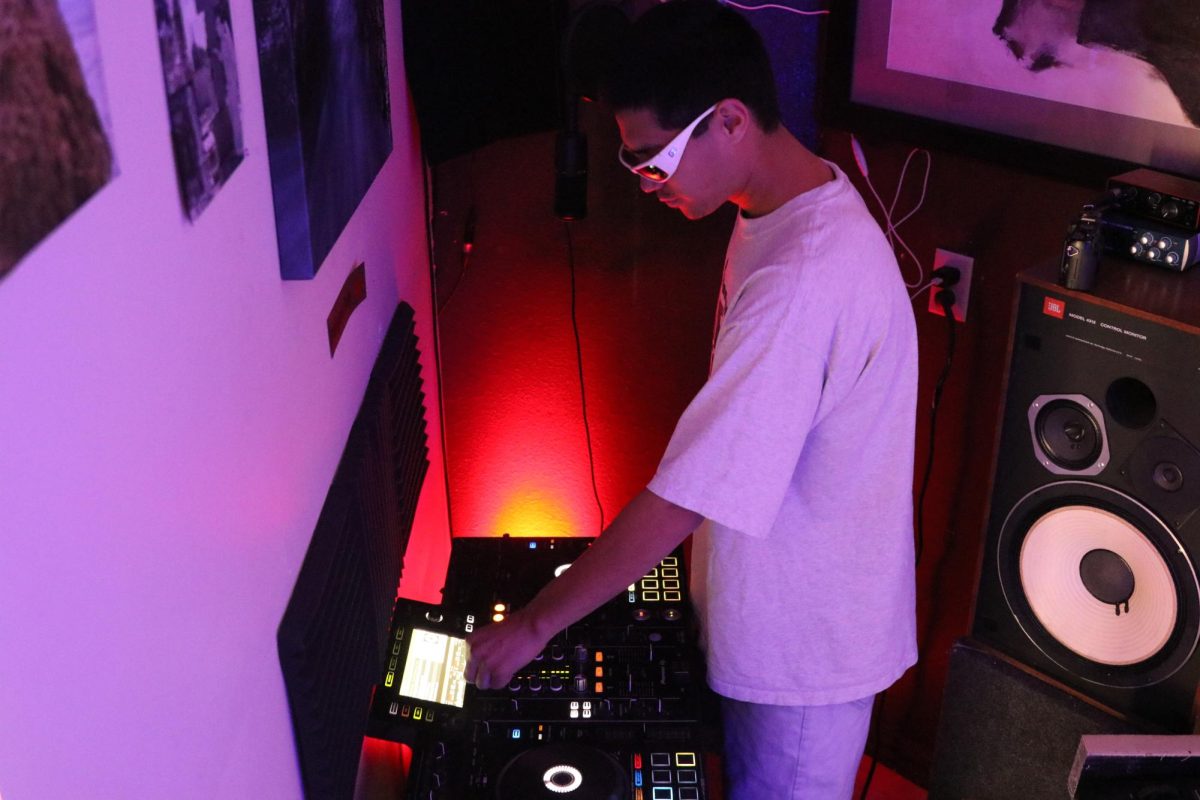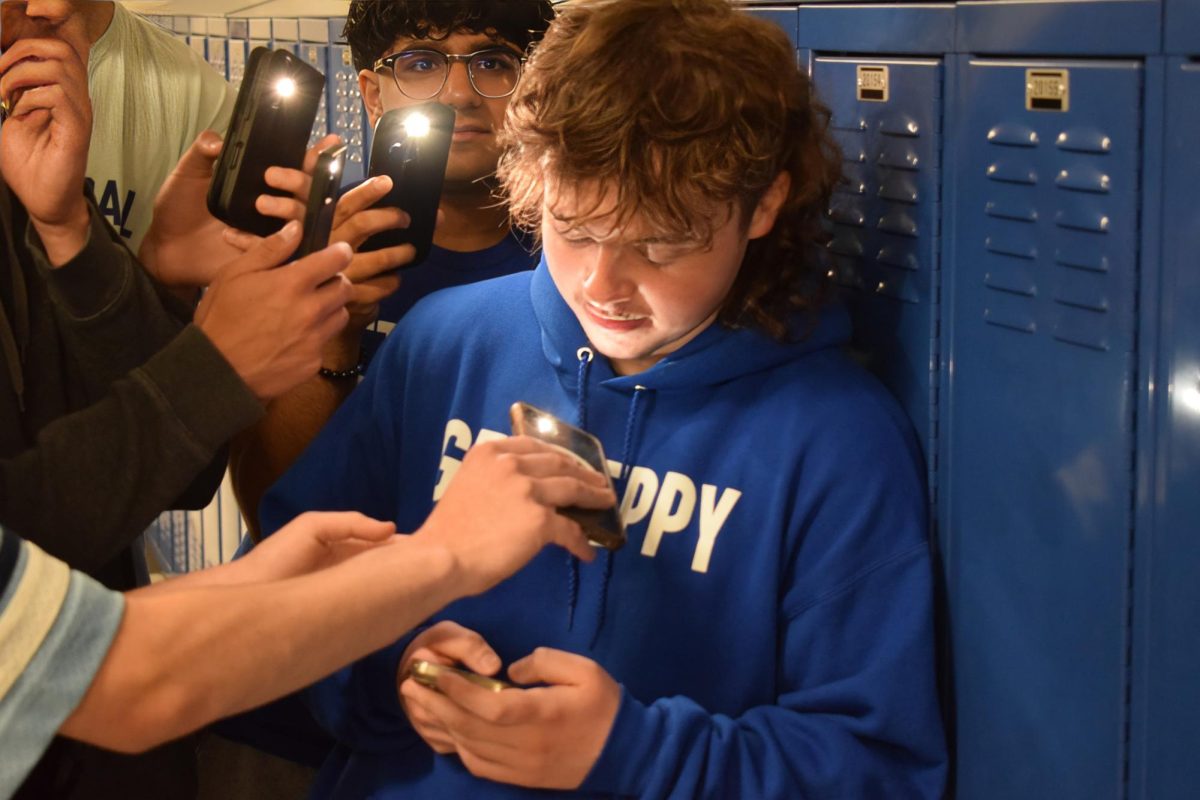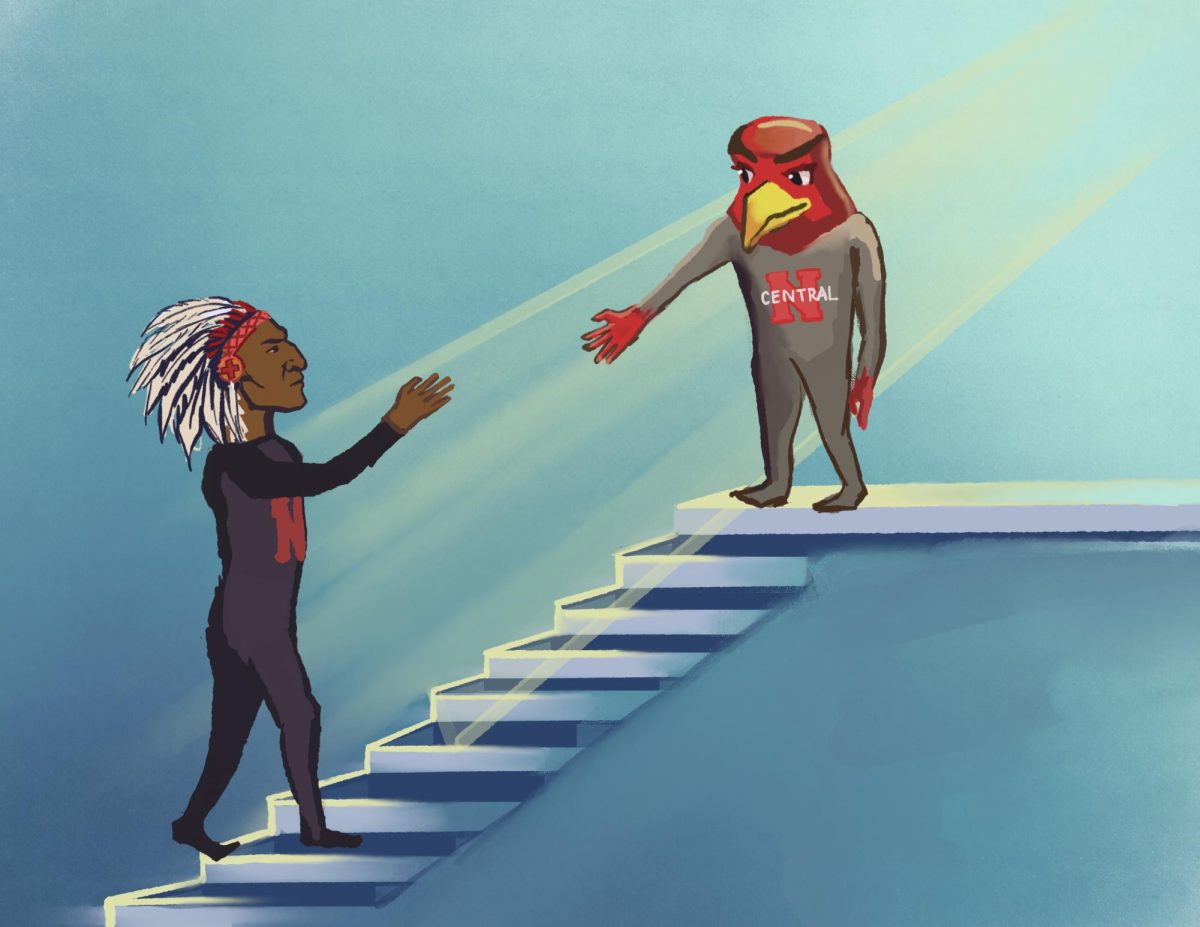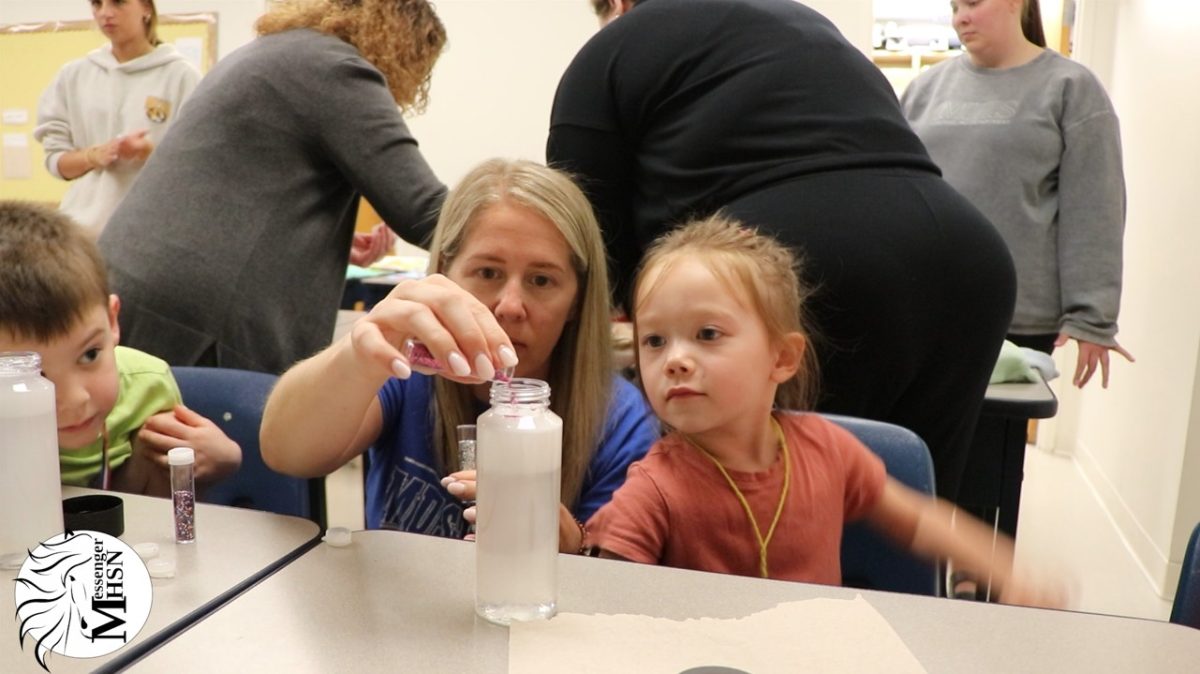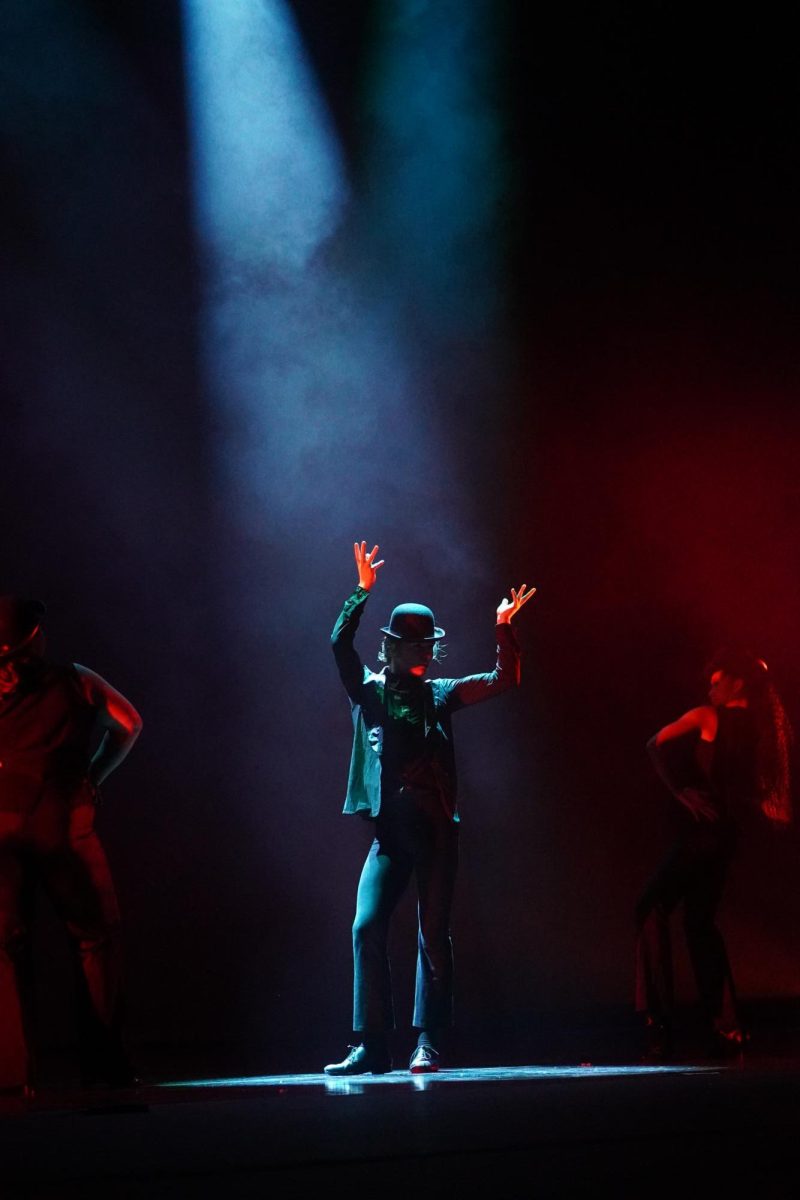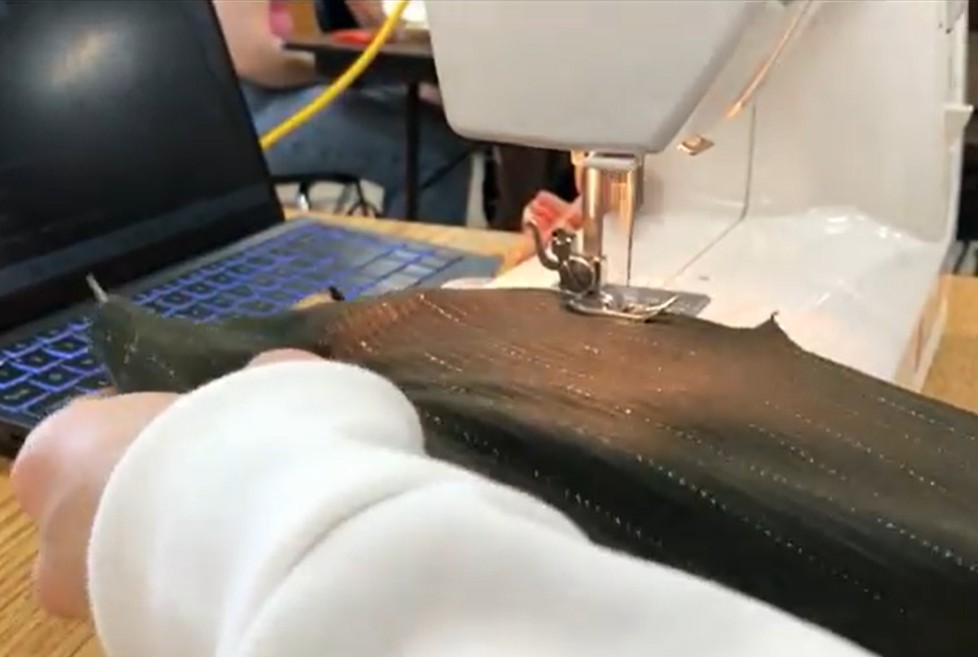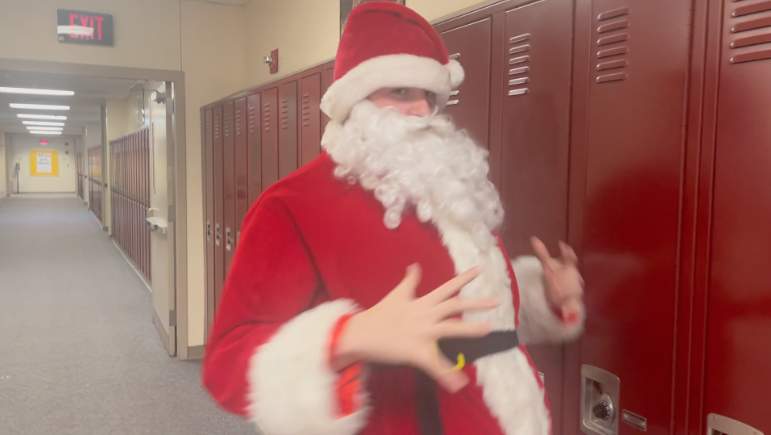A Claus for Concern – OPINION
Consider the damage wreaked by Santa Claus.
Kylie Pulido
Santa roams the halls of AHS in the days leading up to Christmas. Is he bringing joy or anxiety?
December 10, 2021
He sees you when you’re sleeping; he knows when you’re awake.
Frankly, this sounds terrifying.
Someone watching you sleep and stalking your every move? That’s the stuff of horror movies that no one wants to hear — much less a young child.
What started as an actual historical figure — St. Nicholas — has through the centuries been twisted and commercialized into a ploy to sell toys and movies rather than to spread the love of Christmas.
From October to January, Santa Claus dominates shopping malls and television commercials. He infiltrates homes in the form of decorations, stockings, and inflatable yard statues. In every store and on every box, Santa is no longer a symbol of innocent joy and Christmas magic; instead, he is a marketing strategy used to promote unhealthy Christmas candy, useless toys, and pointless movies.
If Santa’s persistent propinquity wasn’t enough, consider the implications of his story in the first place. According to popular songs and stories of Santa Claus, he watches everyone constantly to determine whether they belong on the “naughty” list or the “nice” list. When I was young, I had a nagging fear that Santa was watching me in the bathroom and as I slept. The idea that I was on some old man’s secret list based on my behavior throughout the year gave me the heebie-jeebies.
Growing up, junior Ally Peterson was similarly disturbed by the idea of Santa. “We never had a chimney growing up, and my parents always told me he just walked through the door,” they said, “The thought of some old guy just walking through our door [in the night] was terrifying.”
Telling young children they are being secretly observed, and they’d better behave themselves before an old man enters their house in the middle of the night, can contribute to anxiety. It also imposes unrealistic expectations for non-stop good behavior.
In addition to the disturbing idea of Santa Claus watching children sleep, bad becomes worse when parents promote the lie even after their children have seen through it. For one thing, presenting the myth as reality despite loads of contrary evidence can hinder the development of logical thinking. Children are torn between believing their parents, whom they see as trustworthy, or valuing their own logic and evidence. If a child asks their parents if Santa Claus is real and their parent responds with “yes, of course he is,” the child begins to question their own logic. This is a dangerous game to play at such a developmental stage in their life.
English and Drama teacher Brandon Bagget thinks it is okay to play up Santa Claus “up until the child beings to question Santa’s existence logically.” He discourages pushing the Santa myth at this point. “To keep the facade up while [children] are developing [critical thinking] skills can be damaging,” he said.
Additionally, once a child finds out that Santa is not real, they begin to wonder, ‘What else are my parents lying about?’ Their happiest childhood memories now seem meaningless, and their trust is left in shambles.
Math teacher Laura Vogel found out the truth about Christmas morning the hard way. “I had my doubts but wasn’t sure,” she said. “I woke up Christmas morning and there were no presents from Santa. I asked my mom why there weren’t presents from Santa and she said, ‘Oh, I thought you knew.’”
Now that she has two young sons of her own, Vogel has “mixed feelings” on how to go about Santa Claus. “We don’t want to take away from the real reason of Christmas,” she said. “[But] we are doing Santa for our kids because they have already heard about him from daycare and other kids. Saint Nick was a real person so that’s why my husband is okay with [it].”
Vogel believes that promoting Santa Clause among children can produce the unintended consequence of discrimination. “Santa is only bringing one small gift for each of my boys,” she said. “I don’t think Santa should bring big extravagant gifts because not every parent can afford that. It’s hard to explain to a student why their friend got something expensive from Santa when they only received socks.”
Aside from discrepancies between each child and their household circumstances, sometimes learning the truth about Old St. Nick can take an outright toll on a child’s mental health.
Junior Laney Brosam said learning about Santa from a classmate in second grade was “traumatic.” She had lost a tooth at school when a classmate exposed both the Tooth Fairy and Santa as make-believe.

Reese DeArment, also a junior, remembers “crying and everything” when her parents sat her down to explain that they, not Santa, were the ones bringing gifts. Hard as that was, she is grateful they told her themselves.
Sophomore Trahyger Carey found out the truth about Santa from his uncle. “[He] told me Santa was locked in a safe in his basement,” he said. “He told me I could only save Christmas if I could open the safe. I did not know how to because I was so young.” Despite this, Carey believes that parents should still promote Santa with their children, because “he may not be real, but the spirit of Christmas is.”
So you better watch out, you better cry, you better pout; I’m telling you why: Santa Claus is coming to town and taking joy out of Christmas.
This story was originally published on AHSneedle on December 9, 2021.

